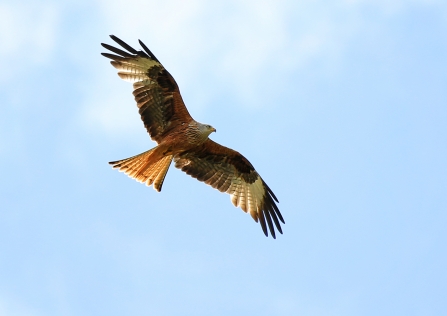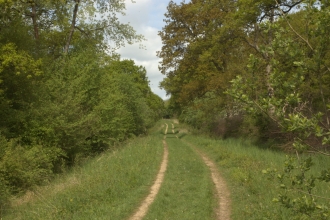With Christmas festivities behind us for another year, it is time to venture out into the woods again, to crack on with the winter work in preparation for the spring. Waterproof boots and mud-proof clothing are a necessity following months of heavy rain. The work area is a quagmire, through which the volunteers will spend many happy hours sliding and squelching.
Pete Bray (BBOWT’s North Buckinghamshire Reserves Officer) and his chainsaw gang have been at Finemere Wood in the volunteers’ absence, to cut down those larger trees, which even the most mighty and foolhardy would not attempt with a hand saw.
The spoils are left for the mud splattered workers to cut and sort into bonfire material, fencing stakes and logs. The creative amongst us scavenge for odds and ends of wood to turn into spoons, bowls, birdbaths, and trellises.
Meanwhile, Pete and his mob head up the track to tackle some immense conifer trees. A Forestry Commission site in the 1970s, large areas of this ancient woodland became a timber plantation. Over the years, since BBOWT’s ownership, these conifers are gradually being removed, making room for the regeneration of native trees. A small number of conifers will be left as they provide an important habitat for some species.



